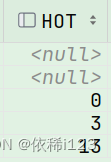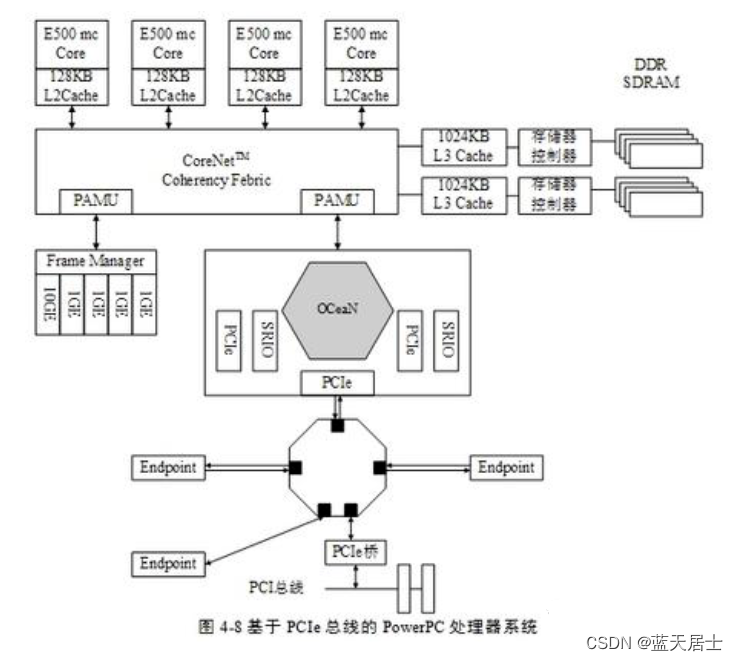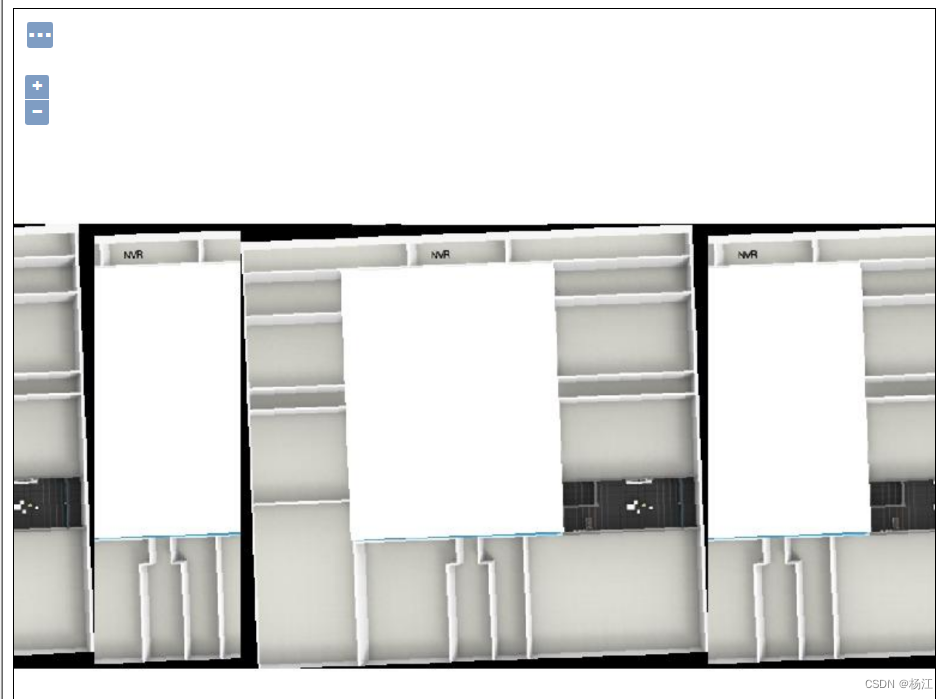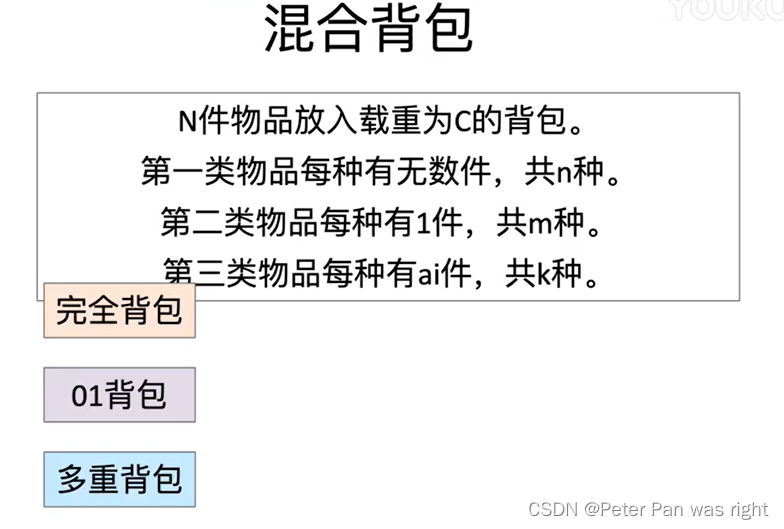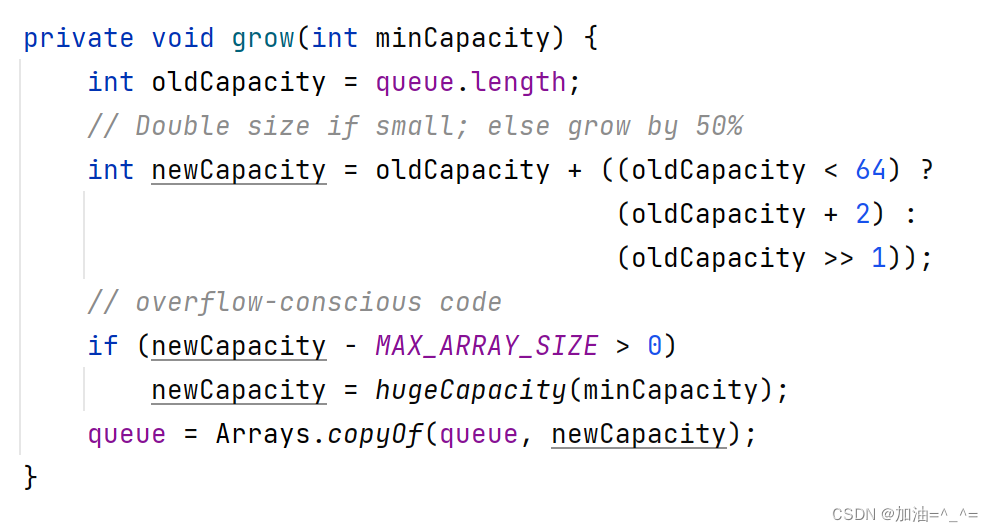由于接口需要,retrofit上传不能用POST,因为@FormUrlEncoded注解跟@Body不能共存,所以更改成了@QueryMap

因为需要传参,所先将图片集合转成了Hashmap集合,再使用Gson 将集合转成Json 字符串 ,再转成RequestBody

下面介绍一下retrofit
public interface ApiService {@POST()@FormUrlEncodedObservable<ResponseBody> post(@Url String url, @FieldMap Map<String, String> maps);@POST()Observable<ResponseBody> postBody(@Url String url, @Body Object object);@POST()@Headers({"Content-Type: application/json", "Accept: application/json"})Observable<ResponseBody> postJson(@Url String url, @Body RequestBody jsonBody);@POST()Observable<ResponseBody> postBody(@Url String url, @Body RequestBody body);@GET()Observable<ResponseBody> get(@Url String url, @QueryMap Map<String, String> maps);@DELETE()Observable<ResponseBody> delete(@Url String url, @QueryMap Map<String, String> maps);//@DELETE()//delete body请求比较特殊 需要自定义@HTTP(method = "DELETE",/*path = "",*/hasBody = true)Observable<ResponseBody> deleteBody(@Url String url, @Body Object object);//@DELETE()//delete body请求比较特殊 需要自定义@HTTP(method = "DELETE",/*path = "",*/hasBody = true)Observable<ResponseBody> deleteBody(@Url String url, @Body RequestBody body);//@DELETE()//delete body请求比较特殊 需要自定义@Headers({"Content-Type: application/json", "Accept: application/json"})@HTTP(method = "DELETE",/*path = "",*/hasBody = true)Observable<ResponseBody> deleteJson(@Url String url, @Body RequestBody jsonBody);@PUT()Observable<ResponseBody> put(@Url String url, @QueryMap Map<String, String> maps);@PUT()Observable<ResponseBody> putBody(@Url String url, @Body Object object);@PUT()Observable<ResponseBody> putBody(@Url String url, @Body RequestBody body);@PUT()@Headers({"Content-Type: application/json", "Accept: application/json"})Observable<ResponseBody> putJson(@Url String url, @Body RequestBody jsonBody);@Multipart@POST()Observable<ResponseBody> uploadFlie(@Url String fileUrl, @Part("description") RequestBody description, @Part("files") MultipartBody.Part file);@Multipart@POST()Observable<ResponseBody> uploadFiles(@Url String url, @PartMap() Map<String, RequestBody> maps);@Multipart@POST()Observable<ResponseBody> uploadFiles(@Url String url, @Part() List<MultipartBody.Part> parts);@Streaming@GETObservable<ResponseBody> downloadFile(@Url String fileUrl);
}
1.简介
特别注意:
准确拉说,retrofit是一个RESTful的HTTP网络请求框架的封装
原因:网络请求的工作本质上是okHttp完成,而 retrofit仅负责网路请求接口的封装
App应用程序通过retrofit请求网络,实际上是使用retrofit接口层封装请求参数,Header,Url等信息,之后由OkHttp完成后续的请求操作
在服务端返回数据之后,OkHttp将原始的结果交给Retrofit,Retrofit根据用户的需求对结果进行解析
网络请求库对比:
2.使用介绍:
使用Retrofit的步骤共有七个:
添加Retrofit库的依赖
创建接受服务器返回数据的类
创建描述网络请求的接口
创建Retrofit实例
创建网络请求接口实例并配置网络请求参数
发送网络请求(异步/同步)
封装了数据转换,线程切换的操作
处理服务器返回的数据
添加依赖
在Gradle加入Retrofit库的依赖
由于Retrofit是基于OkHttp,所以还需要添加OkHttp
dependencies {compile 'com.squareup.retrofit2:retrofit:2.0.2'// Retrofit库compile 'com.squareup.okhttp3:okhttp:3.1.2'// Okhttp库}
不要忘记添加网络权限
<uses-permission android:name="android.permission.INTERNET"/>
创建接受服务器返回数据的类
public class Reception {...// 根据返回数据的格式和数据解析方式(Json、XML等)定义// 下面会在实例进行说明}
创建用户描述网络请求的接口
Retrofit将Http请求抽象成Java接口:采用注解描述网络请求参数和配置网络网络请求参数
1.用动态代理 动态 将该接口的注解“翻译”成一个Http请求,最后再执行Http请求
2.注:接口中的每个方法的参数都需要使用注解标注,否则会报错
public interface GetRequest_Interface {@GET("openapi.do?keyfrom=Yanzhikai&key=2032414398&type=data&doctype=json&version=1.1&q=car")Call<Translation> getCall();// @GET注解的作用:采用Get方法发送网络请求// getCall() = 接收网络请求数据的方法// 其中返回类型为Call<*>,*是接收数据的类(即上面定义的Translation类)// 如果想直接获得Responsebody中的内容,可以定义网络请求返回值为Call<ResponseBody>
}
注解类型:
注解说明:
第一类:网络请求方法
详细说明:
a. @GET、@POST、@PUT、@DELETE、@HEAD
以上方法分别对应 HTTP中的网络请求方式
public interface GetRequest_Interface {@GET("openapi.do?keyfrom=Yanzhikai&key=2032414398&type=data&doctype=json&version=1.1&q=car")Call<Translation> getCall();// @GET注解的作用:采用Get方法发送网络请求// getCall() = 接收网络请求数据的方法// 其中返回类型为Call<*>,*是接收数据的类(即上面定义的Translation类)
}
此处特意说明URL的组成:Retrofit把网络请求的URL分成了两部分设置:
// 第1部分:在网络请求接口的注解设置
@GET("openapi.do?keyfrom=Yanzhikai&key=2032414398&type=data&doctype=json&version=1.1&q=car")
Call<Translation> getCall();// 第2部分:在创建Retrofit实例时通过.baseUrl()设置
Retrofit retrofit = new Retrofit.Builder().baseUrl("http://fanyi.youdao.com/") //设置网络请求的Url地址.addConverterFactory(GsonConverterFactory.create()) //设置数据解析器.build();// 从上面看出:一个请求的URL可以通过 替换块 和 请求方法的参数 来进行动态的URL更新。
// 替换块是由 被{}包裹起来的字符串构成
// 即:Retrofit支持动态改变网络请求根目录
网络请求的完整Url在创建Retrofit实例时通过.baseUrl()设置+网络请求接口的注解设置(下面称“path”)
具体整合的规则如下:
建议采用第三种方式来配置,并尽量使用同一种路径形式
b. @HTTP
作用:替换@GET、@POST、@PUT、@DELETE、@HEAD注解的作用及更多功能扩展
具体使用:通过属性method,path,hasBody进行设置
public interface GetRequest_Interface {/*** method:网络请求的方法(区分大小写)* path:网络请求地址路径* hasBody:是否有请求体*/@HTTP(method = "GET", path = "blog/{id}", hasBody = false)Call<ResponseBody> getCall(@Path("id") int id);// {id} 表示是一个变量// method 的值 retrofit 不会做处理,所以要自行保证准确
}
第二类:标记
a.@FormUrlEncoded
作用:表示发送form-encoded的数据
每个键值对需要用@Filed来注解键名,随后的对象需要提供值
b.@Multipart
作用:表示发送form-encoded的数据(适用于有文件上传的场景)
每个键值对需要用@Part来注解键名,随后的对象需要提供值
public interface GetRequest_Interface {/***表明是一个表单格式的请求(Content-Type:application/x-www-form-urlencoded)* <code>Field("username")</code> 表示将后面的 <code>String name</code> 中name的取值作为 username 的值*/@POST("/form")@FormUrlEncodedCall<ResponseBody> testFormUrlEncoded1(@Field("username") String name, @Field("age") int age);/*** {@link Part} 后面支持三种类型,{@link RequestBody}、{@link okhttp3.MultipartBody.Part} 、任意类型* 除 {@link okhttp3.MultipartBody.Part} 以外,其它类型都必须带上表单字段({@link okhttp3.MultipartBody.Part} 中已经包含了表单字段的信息),*/@POST("/form")@MultipartCall<ResponseBody> testFileUpload1(@Part("name") RequestBody name, @Part("age") RequestBody age, @Part MultipartBody.Part file);}// 具体使用GetRequest_Interface service = retrofit.create(GetRequest_Interface.class);// @FormUrlEncoded Call<ResponseBody> call1 = service.testFormUrlEncoded1("Carson", 24);// @MultipartRequestBody name = RequestBody.create(textType, "Carson");RequestBody age = RequestBody.create(textType, "24");MultipartBody.Part filePart = MultipartBody.Part.createFormData("file", "test.txt", file);Call<ResponseBody> call3 = service.testFileUpload1(name, age, filePart);
第三类:网络请求参数
详细说明:
a.@Header & @Headers
作用:添加请求头 & 添加不固定的请求头
// @Header
@GET("user")
Call<User> getUser(@Header("Authorization") String authorization)// @Headers
@Headers("Authorization: authorization")
@GET("user")
Call<User> getUser()// 以上的效果是一致的。
// 区别在于使用场景和使用方式
// 1. 使用场景:@Header用于添加不固定的请求头,@Headers用于添加固定的请求头
// 2. 使用方式:@Header作用于方法的参数;@Headers作用于方法
b.@Boby
作用:以post方式传递自定义数据类型给服务器
特别注意,如果提交的是一个Map,那么作用相当于@Field
不过Map要经过 FormBody.Builder 类处理成为符合 Okhttp 格式的表单,如:
FormBody.Builder builder = new FormBody.Builder();
builder.add(“key”,”value”);c.@Field & @FieldMap作用:发送Post请求时提交请求的表单字段
具体使用:与@FormUrlEncoded注解配合使用
public interface GetRequest_Interface {/***表明是一个表单格式的请求(Content-Type:application/x-www-form-urlencoded)* <code>Field("username")</code> 表示将后面的 <code>String name</code> 中name的取值作为 username 的值*/@POST("/form")@FormUrlEncodedCall<ResponseBody> testFormUrlEncoded1(@Field("username") String name, @Field("age") int age);/*** Map的key作为表单的键*/@POST("/form")@FormUrlEncodedCall<ResponseBody> testFormUrlEncoded2(@FieldMap Map<String, Object> map);}// 具体使用// @FieldCall<ResponseBody> call1 = service.testFormUrlEncoded1("Carson", 24);// @FieldMap// 实现的效果与上面相同,但要传入MapMap<String, Object> map = new HashMap<>();map.put("username", "Carson");map.put("age", 24);Call<ResponseBody> call2 = service.testFormUrlEncoded2(map);
d.@Part & PartMap
作用:发送Post请求时提交请求的表单字段
与@Field的区别:功能相同,但携带的参数类型更加丰富,包括数据流,所以适用于有文件上传的场景具体使用:与@Multipart注解配合使用
public interface GetRequest_Interface {/*** {@link Part} 后面支持三种类型,{@link RequestBody}、{@link okhttp3.MultipartBody.Part} 、任意类型* 除 {@link okhttp3.MultipartBody.Part} 以外,其它类型都必须带上表单字段({@link okhttp3.MultipartBody.Part} 中已经包含了表单字段的信息),*/@POST("/form")@MultipartCall<ResponseBody> testFileUpload1(@Part("name") RequestBody name, @Part("age") RequestBody age, @Part MultipartBody.Part file);/*** PartMap 注解支持一个Map作为参数,支持 {@link RequestBody } 类型,* 如果有其它的类型,会被{@link retrofit2.Converter}转换,如后面会介绍的 使用{@link com.google.gson.Gson} 的 {@link retrofit2.converter.gson.GsonRequestBodyConverter}* 所以{@link MultipartBody.Part} 就不适用了,所以文件只能用<b> @Part MultipartBody.Part </b>*/@POST("/form")@MultipartCall<ResponseBody> testFileUpload2(@PartMap Map<String, RequestBody> args, @Part MultipartBody.Part file);@POST("/form")@MultipartCall<ResponseBody> testFileUpload3(@PartMap Map<String, RequestBody> args);
}// 具体使用
MediaType textType = MediaType.parse("text/plain");RequestBody name = RequestBody.create(textType, "Carson");RequestBody age = RequestBody.create(textType, "24");RequestBody file = RequestBody.create(MediaType.parse("application/octet-stream"), "这里是模拟文件的内容");// @PartMultipartBody.Part filePart = MultipartBody.Part.createFormData("file", "test.txt", file);Call<ResponseBody> call3 = service.testFileUpload1(name, age, filePart);ResponseBodyPrinter.printResponseBody(call3);// @PartMap// 实现和上面同样的效果Map<String, RequestBody> fileUpload2Args = new HashMap<>();fileUpload2Args.put("name", name);fileUpload2Args.put("age", age);//这里并不会被当成文件,因为没有文件名(包含在Content-Disposition请求头中),但上面的 filePart 有//fileUpload2Args.put("file", file);Call<ResponseBody> call4 = service.testFileUpload2(fileUpload2Args, filePart); //单独处理文件ResponseBodyPrinter.printResponseBody(call4);
}
e.@Query & @QueryMap
作用:用于@GET方法的查询参数(Query = Url中‘?’后面的key-value)
如:url = http://www.println.net/?cate=android,其中,Query = cate
-具体使用:配置时只需要在接口方法中增加一个参数即可:
f.@Path作用:URL地址的缺省值
public interface GetRequest_Interface {@GET("users/{user}/repos")Call<ResponseBody> getBlog(@Path("user") String user );// 访问的API是:https://api.github.com/users/{user}/repos// 在发起请求时, {user} 会被替换为方法的第一个参数 user(被@Path注解作用)}
g.@Url作用:直接传入一个请求的URL变量用于URL设置
public interface GetRequest_Interface {@GETCall<ResponseBody> testUrlAndQuery(@Url String url, @Query("showAll") boolean showAll);// 当有URL注解时,@GET传入的URL就可以省略// 当GET、POST...HTTP等方法中没有设置Url时,则必须使用 {@link Url}提供}
汇总:
创建Retrofit实例
Retrofit retrofit = new Retrofit.Builder().baseUrl("http://fanyi.youdao.com/") // 设置网络请求的Url地址.addConverterFactory(GsonConverterFactory.create()) // 设置数据解析器.addCallAdapterFactory(RxJavaCallAdapterFactory.create()) // 支持RxJava平台.build();
a.关于数据解析器(Coverter)
Retrofit支持多种数据解析方法
使用时需要在Gradle添加依赖
数据解析器
Gradle依赖
Gson
com.squareup.retrofit2:converter-gson:2.0.2
Jackson
com.squareup.retrofit2:converter-jackson:2.0.2
Simple XML
com.squareup.retrofit2:converter-simplexml:2.0.2
Protobuf
com.squareup.retrofit2:converter-protobuf:2.0.2
Moshi
com.squareup.retrofit2:converter-moshi:2.0.2
Wire
com.squareup.retrofit2:converter-wire:2.0.2
Scalars
com.squareup.retrofit2:converter-scalars:2.0.2
b.关于网络请求适配器(CallAdapter)
Retrofit支持多种网络请求适配器方法:guava,Java8和rxjava
使用时如使用的android默认的CallAdapter,则不需要添加网络请求适配器的依赖,否则则需要按照 需求进行添加Retrofit提供的CallAdapter
网络请求适配器
Gradle依赖
guava
com.squareup.retrofit2:adapter-guava:2.0.2
Java8
com.squareup.retrofit2:adapter-java8:2.0.2
rxjava
com.squareup.retrofit2:adapter-rxjava:2.0.2
创建网络请求接口实例
// 创建 网络请求接口 的实例
GetRequest_Interface request = retrofit.create(GetRequest_Interface.class);//对 发送请求 进行封装Call<Reception> call = request.getCall();
发送网络请求(异步/同步)
//发送网络请求(异步)
call.enqueue(new Callback() {
//请求成功时回调
@Override
public void onResponse(Call call, Response response) {
//请求处理,输出结果
response.body().show();
}//请求失败时候的回调@Overridepublic void onFailure(Call<Translation> call, Throwable throwable) {System.out.println("连接失败");}});
// 发送网络请求(同步)
Response response = call.execute();
处理返回数据
通过response类的body()对返回的数据进行处理
//发送网络请求(异步)call.enqueue(new Callback<Translation>() {//请求成功时回调@Overridepublic void onResponse(Call<Translation> call, Response<Translation> response) {// 对返回数据进行处理response.body().show();}//请求失败时候的回调@Overridepublic void onFailure(Call<Translation> call, Throwable throwable) {System.out.println("连接失败");}});// 发送网络请求(同步)Response<Reception> response = call.execute();// 对返回数据进行处理response.body().show();
实例讲解
接下来,我用两个实例分别将对Retrofit Get方式和Post方式进行 网络请求 讲解
实例1:
金山词霸API 的数据格式说明如下:
URL模板 http://fy.iciba.com/ajax.phpURL实例http://fy.iciba.com/ajax.php?a=fy&f=auto&t=auto&w=hello%20world参数说明: a:固定值 fy
f:原文内容类型,日语取 ja,中文取 zh,英语取 en,韩语取 ko,德语取de,西班牙语取 es,法语取 fr,自动则取 autot:译文内容类型,日语取 ja,中文取 zh,英语取 en,韩语取ko,德语取 de,西班牙语取 es,法语取 fr,自动则取 autow:查询内容
json实例:
首先创建服务器返回数据的类:
public class Translation {private int status;private content content;private static class content {private String from;private String to;private String vendor;private String out;private int errNo;}//定义 输出返回数据 的方法public void show() {System.out.println(status);System.out.println(content.from);System.out.println(content.to);System.out.println(content.vendor);System.out.println(content.out);System.out.println(content.errNo);}
}
创建描述网络请求的接口:
public interface GetRequest_Interface {@GET("ajax.php?a=fy&f=auto&t=auto&w=hello%20world")Call<Translation> getCall();// 注解里传入 网络请求 的部分URL地址// Retrofit把网络请求的URL分成了两部分:一部分放在Retrofit对象里,另一部分放在网络请求接口里// 如果接口里的url是一个完整的网址,那么放在Retrofit对象里的URL可以忽略// getCall()是接受网络请求数据的方法
}
剩下的步骤都在下面代码:
@Override
protected void onCreate(Bundle savedInstanceState) {super.onCreate(savedInstanceState);setContentView(R.layout.activity_main);request();// 使用Retrofit封装的方法
}
public void request() {//步骤4:创建Retrofit对象Retrofit retrofit = new Retrofit.Builder().baseUrl("http://fy.iciba.com/") // 设置 网络请求 Url.addConverterFactory(GsonConverterFactory.create()) //设置使用Gson解析(记得加入依赖).build();// 步骤5:创建 网络请求接口 的实例GetRequest_Interface request = retrofit.create(GetRequest_Interface.class);//对 发送请求 进行封装Call<Translation> call = request.getCall();//步骤6:发送网络请求(异步)call.enqueue(new Callback<Translation>() {//请求成功时回调@Overridepublic void onResponse(Call<Translation> call, Response<Translation> response) {// 步骤7:处理返回的数据结果response.body().show();}//请求失败时回调@Overridepublic void onFailure(Call<Translation> call, Throwable throwable) {System.out.println("连接失败");}});
}由于此处采用了 Gson 解析,所以需要在 Gradle加入依赖
build.gradle
api ‘com.squareup.retrofit2:converter-gson:2.0.2’实例2:
API的数据格式说明如下:
// URL
http://www.baidu.com/// URL实例
http://www.baidu.com/?doctype=json&jsonversion=&type=&keyfrom=&model=&mid=&imei=&vendor=&screen=&ssid=&network=&abtest=// 参数说明
// doctype:json 或 xml
// jsonversion:如果 doctype 值是 xml,则去除该值,若 doctype 值是 json,该值为空即可
// xmlVersion:如果 doctype 值是 json,则去除该值,若 doctype 值是 xml,该值为空即可
// type:语言自动检测时为 null,为 null 时可为空。英译中为 EN2ZH_CN,中译英为 ZH_CN2EN,日译中为 JA2ZH_CN,中译日为 ZH_CN2JA,韩译中为 KR2ZH_CN,中译韩为 ZH_CN2KR,中译法为 ZH_CN2FR,法译中为 FR2ZH_CN
// keyform:mdict. + 版本号 + .手机平台。可为空
// model:手机型号。可为空
// mid:平台版本。可为空
// imei:???。可为空
// vendor:应用下载平台。可为空
// screen:屏幕宽高。可为空
// ssid:用户名。可为空
// abtest:???。可为空// 请求方式说明
// 请求方式:POST
// 请求体:i
// 请求格式:x-www-form-urlencoded
json实例:
根据 有道API 的数据格式,创建 接收服务器返回数据 的类:
public class Translation1 {private String type;private int errorCode;private int elapsedTime;private List<List<TranslateResultBean>> translateResult;public String getType() {return type;}public void setType(String type) {this.type = type;}public int getErrorCode() {return errorCode;}public void setErrorCode(int errorCode) {this.errorCode = errorCode;}public int getElapsedTime() {return elapsedTime;}public void setElapsedTime(int elapsedTime) {this.elapsedTime = elapsedTime;}public List<List<TranslateResultBean>> getTranslateResult() {return translateResult;}public void setTranslateResult(List<List<TranslateResultBean>> translateResult) {this.translateResult = translateResult;}public static class TranslateResultBean {public String src;public String tgt;public String getSrc() {return src;}public void setSrc(String src) {this.src = src;}public String getTgt() {return tgt;}public void setTgt(String tgt) {this.tgt = tgt;}}}
创建描述网络请求的接口
public interface PostRequest_Interface {@POST("translate?doctype=json&jsonversion=&type=&keyfrom=&model=&mid=&imei=&vendor=&screen=&ssid=&network=&abtest=")@FormUrlEncodedCall<Translation1> getCall(@Field("i") String targetSentence);//采用@Post表示Post方法进行请求(传入部分url地址)// 采用@FormUrlEncoded注解的原因:API规定采用请求格式x-www-form-urlencoded,即表单形式// 需要配合@Field 向服务器提交需要的字段
}
请求和处理:
public class PostRequest extends AppCompatActivity {@Overrideprotected void onCreate(Bundle savedInstanceState) {super.onCreate(savedInstanceState);setContentView(R.layout.activity_main);request();}public void request() {//步骤4:创建Retrofit对象Retrofit retrofit = new Retrofit.Builder().baseUrl("http://fanyi.youdao.com/") // 设置 网络请求 Url.addConverterFactory(GsonConverterFactory.create()) //设置使用Gson解析(记得加入依赖).build();// 步骤5:创建 网络请求接口 的实例PostRequest_Interface request = retrofit.create(PostRequest_Interface.class);//对 发送请求 进行封装(设置需要翻译的内容)Call<Translation1> call = request.getCall("I love you");//步骤6:发送网络请求(异步)call.enqueue(new Callback<Translation1>() {//请求成功时回调@Overridepublic void onResponse(Call<Translation1> call, Response<Translation1> response) {// 步骤7:处理返回的数据结果:输出翻译的内容System.out.println(response.body().getTranslateResult().get(0).get(0).getTgt());}//请求失败时回调@Overridepublic void onFailure(Call<Translation1> call, Throwable throwable) {System.out.println("请求失败");System.out.println(throwable.getMessage());}});}}
Retrofit的扩展使用
Retrofit的使用场景非常丰富,如支持RxJava和Prototocobuff
具体设置也非常简单 & 方便:
<-- 主要在创建Retrofit对象中设置 -->
Retrofit retrofit = new Retrofit.Builder().baseUrl(""http://fanyi.youdao.com/"").addConverterFactory(ProtoConverterFactory.create()) // 支持Prototocobuff解析.addConverterFactory(GsonConverterFactory.create()) // 支持Gson解析.addCallAdapterFactory(RxJavaCallAdapterFactory.create()) // 支持RxJava.build();


